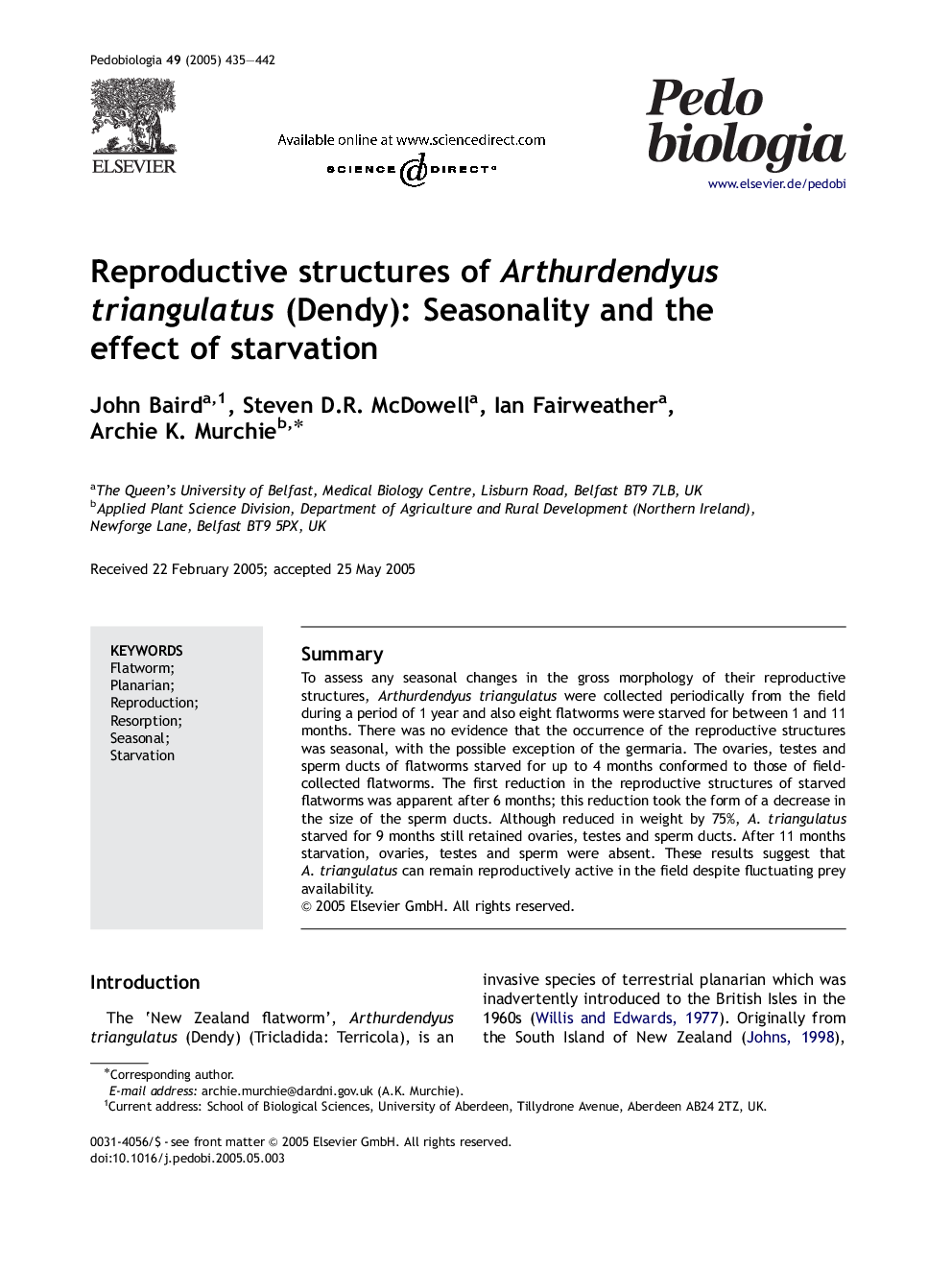| Article ID | Journal | Published Year | Pages | File Type |
|---|---|---|---|---|
| 10878711 | Pedobiologia | 2005 | 8 Pages |
Abstract
To assess any seasonal changes in the gross morphology of their reproductive structures, Arthurdendyus triangulatus were collected periodically from the field during a period of 1 year and also eight flatworms were starved for between 1 and 11 months. There was no evidence that the occurrence of the reproductive structures was seasonal, with the possible exception of the germaria. The ovaries, testes and sperm ducts of flatworms starved for up to 4 months conformed to those of field-collected flatworms. The first reduction in the reproductive structures of starved flatworms was apparent after 6 months; this reduction took the form of a decrease in the size of the sperm ducts. Although reduced in weight by 75%, A. triangulatus starved for 9 months still retained ovaries, testes and sperm ducts. After 11 months starvation, ovaries, testes and sperm were absent. These results suggest that A. triangulatus can remain reproductively active in the field despite fluctuating prey availability.
Related Topics
Life Sciences
Agricultural and Biological Sciences
Animal Science and Zoology
Authors
John Baird, Steven D.R. McDowell, Ian Fairweather, Archie K. Murchie,
